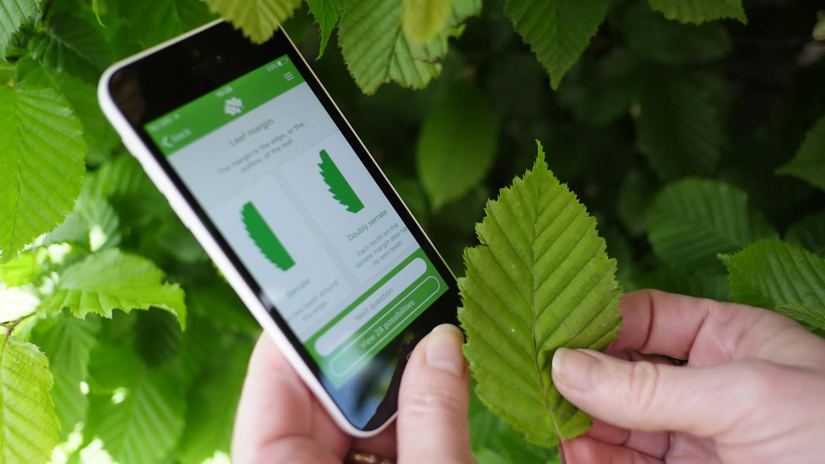
Credit: Nature Photographers Ltd / WTML
Leaves
Straight, small needles with a pointed tip, coloured dark green above and green-grey below. They grow in two rows on either side of each twig.
Ancient, morbid, toxic. The yew is one of the longest-lived native species in Europe. This has made it a symbol of death and doom, but it provides food and shelter for woodland animals.
Common names: yew, common yew, English yew
Scientific name: Taxus baccata
Family: Taxaceae
Origin: native
Mature yew trees can grow to 20m. The bark is reddish-brown with purple tones, and peeling. The yew is probably the most long-lived tree in northern Europe.
Look out for: the needle-like leaves which grow in two rows along a twig. Underneath, the needles each have a raised central vein.
Identified in winter by: its evergreen needle-like leaves which are present all year round.

Credit: Nature Photographers Ltd / WTML
Straight, small needles with a pointed tip, coloured dark green above and green-grey below. They grow in two rows on either side of each twig.

Credit: Nature Photographers Ltd / WTML
Yew is dioecious, meaning that male and female flowers grow on separate trees. These are visible in March and April. Male flowers are insignificant white-yellow globe-like structures. Female flowers are bud-like and scaly, and green when young but becoming brown and acorn-like with age.

Credit: Fran Hitchinson / WTML
Unlike many other conifers, the common yew does not actually bear its seeds in a cone. Instead, each seed is enclosed in a red, fleshy, berry-like structure known as an aril which is open at the tip.
Irish yew (Taxus baccata 'fastigiata') or other planted yew species.

Download our free Tree ID app for Android and iPhone to identify the UK's native and non-native trees. It's an A-Z tree guide in your pocket.
Download the appYew is commonly found growing in southern England and often forms the understorey in beech woodland. It can be used as a hedging plant and is common in churchyards.
Yew hedges are incredibly dense, offering protection and nesting opportunities for many birds. The goldcrest and firecrest nest in broadleaf woodland with yew understoreys.
The fruit is eaten by birds, such as the blackbird, mistle thrush, song thrush and fieldfare; and small mammals, including squirrels and dormice. The leaves are eaten by caterpillars of the satin beauty moth.
The Romans believed that yews grew in hell.
Yew trees are associated with churchyards and there are at least 500 churchyards in England which contain yew trees older than the buildings themselves. It is not clear why, but it is thought that yew trees were planted on the graves of plague victims to protect and purify the dead, and also in churchyards to stop 'commoners' from grazing their cattle on church ground as yew is extremely poisonous to livestock.
Yew trees were used as symbols of immortality, but also seen as omens of doom. For many centuries it was the custom for yew branches to be carried on Palm Sunday and at funerals. In Ireland it was said that yew was ‘the coffin of the vine’, as wine barrels were made of yew staves.
Yew timber is incredibly strong and durable. Traditionally, the wood was used in turnery and to make long bows and tool handles. One of the World's oldest surviving wooden artefacts is a yew spear head estimated to be around 450,000 years old.
Anti-cancer compounds are harvested from the foliage of Taxus baccata and used in modern medicine. Yew trees contain the highly poisonous taxane alkaloids that have been developed as anti-cancer drugs. Eating just a few leaves can make a small child severely ill and there have been some deaths linked to yew poisoning. All parts of the tree are poisonous.

They aren't just sources of food, medicines and materials. The carbon-locking qualities of trees and woods are crucial in the fight against climate change.
Find out howYew has a reputation for being indestructible, but it may be susceptible to root rot.
The yew is incredibly long-lived and is not considered ancient until it reaches 900 years old. Ten yew trees in Britain are believed to predate the 10th century.